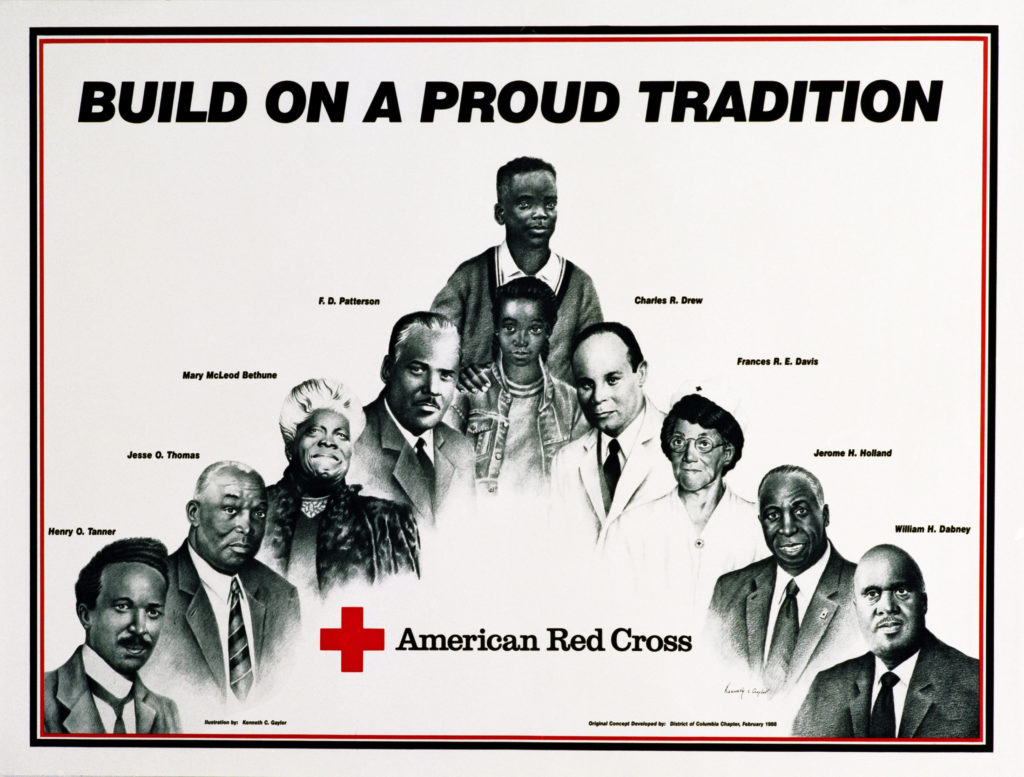
Throughout American Red Cross history, notable African Americans have paved the way in our organization for future generations who came after them. As we kick off Black History Month, we are honoring Black men and women whose contributions were essential to our humanitarian mission.
Frederick Douglass, prominent abolitionist and author, became friends with Clara Barton shortly after the Civil War. He offered her advice and support as she tried to get the organization established in the U.S. Douglass’ name is on the appeal for funds after the 1882 Mississippi floods and he would eventually sign the Articles of Incorporation for the American Red Cross in his capacity as Register of Deeds for the District of Columbia.
Frances Reed Elliott Davis brought her passion for nursing to the Red Cross, becoming its first African American nurse. Her first assignment was providing medical care for the families of service members during World War I in Chattanooga, Tenn. As a legacy for future nurses, she helped organize the first training school for African American nurses at Dunbar Hospital, the first hospital for the black community in Detroit.
Artist Henry Ossawa Tanner painted and sketched the work of the Red Cross in the region of Neufchâteau, France, during World War I. His indelible artwork features many images of African American troops serving on the front lines.
The iconic Red Cross bloodmobiles were the brainchild of Dr. Charles Drew, a pioneer in developing a national blood bank. He was already an authority in this field when he was appointed director of the first Red Cross blood bank in 1941. He was outspoken against unscientific and racially discriminatory practices in blood collection and was dedicated to blazing a trail for African Americans pursuing a medical education.
An advisor to President Franklin D. Roosevelt as the director of Negro Affairs of the National Youth Administration (the first African-American woman to head a federal agency), Mary McLeod Bethune was integral in discussing and increasing African American representation within the Red Cross – from staff in overseas clubs and enrollment of nurses, to those serving on committees and staff departments both locally and nationally, and more.
Dr. Jerome Holland became involved with the Red Cross as a member of the American Red Cross Board of Governors from 1964 to 1970. Later, President Jimmy Carter appointed him chairman of the Board in 1979 and he was appointed again by President Ronald Reagan in 1982, the first African American to hold this position. His greatest contributions include advancing blood research (a Red Cross biomedical research facility in Rockville, Md., is named after him), as well as working to ensure all communities could receive essential and equitable Red Cross services.
A young volunteer serving in the Service to Military Families Department of the Greater Milwaukee Chapter would eventually become the Chairman of the Board and Executive Committee of the same chapter. Gwen T. Jackson’s other leadership roles include the first African American appointed National Chairman of Volunteers in 1988, a member of the American National Red Cross Board of Governors in 1992 and re-elected in 1995, and Chair Emeritus of the Milwaukee Chapter.
Today, a legacy of “firsts” continue for our African American Red Crossers. Rod Tolbert, a South Carolina native, was named the first African American Chief Executive Officer for the South Carolina Region of the Red Cross. His journey with the Red Cross started in 1998 as a Health and Safety Director for a local chapter. He then went on to join Red Cross’ national team as the Vice President for Disaster Services Technology, where he oversaw a team of staff and volunteers that provided IT support for regional and national level disasters.
These are the stories of trailblazers from our past and today, who made significant contributions to our organization. Without them, our humanitarian mission in providing lifesaving blood, critical aid to families impacted by disasters and support to military members, veterans and their families – would not be possible.
This month, we celebrate our historical figures and recognize current African American leaders, like Rod who make the Red Cross what it is today.
